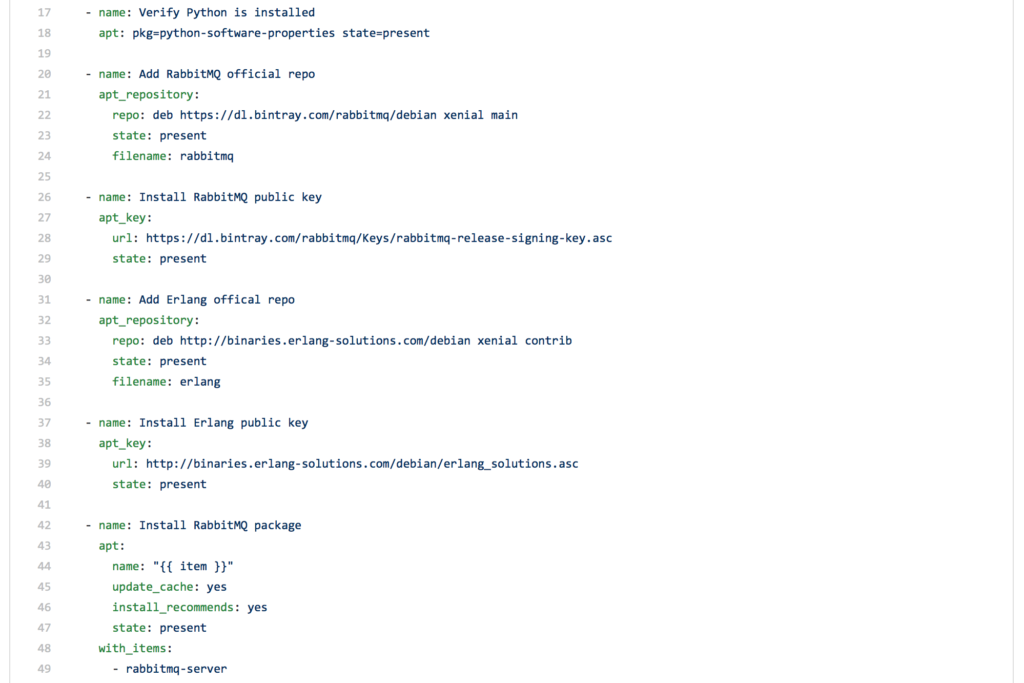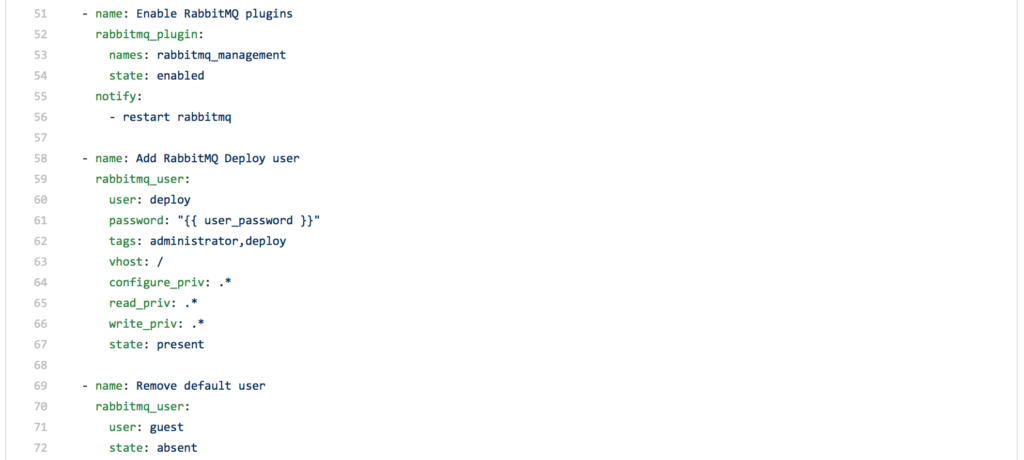I am working on an AMQP Message Broker service architecture, using RabbitMQ, at work right now. As part of the design work, I have spent a bit of time in my vSphere lab standing up the cluster to work out all the configuration, RBAC, policies and other various settings that will be required by the solution. If you haven’t been able to tell lately, my automation tool of choice is Ansible for all the things — I just cannot get enough of it!
Once again, Ansible did not let me down and provides a set of built-in modules for managing RabbitMQ. I found several examples of using the modules to configure a RabbitMQ node and based the work I’ve done off of those. The reason I wrote my own, rather than just git cloning someone else’s work was so that I can write the playbooks (and eventually roles) based on the service architecture specifications I am documenting for the work project.
I have created a new project space on GitHub to host the RabbitMQ playbooks and you are welcome to clone or fork the code based on your needs.
There are currently two playbooks — one for deploying an Ubuntu template into a vSphere environment, one for installing and configuring RabbitMQ on the deployed nodes. I kept the two playbooks separate so that if you want to use install RabbitMQ on a bare-metal or AWS environment, the second playbook can be used as a standalone. If you are choosing to install RabbitMQ in a vSphere environment, the create_vms.yml playbook can be used.
The rabbitmq.yml Ansible playbook will read in a set of environment variables from rabbitmq-vars.yml and then go through the installation steps. I use official repositories for all of the RabbitMQ and Erlang packages.
Note: If you are not using the 16.04 Xenial release, you can change the playbook to use the distribution of Ubuntu you are using inside your environment. I have been sticking with Ubuntu 16.04 LTS mostly because the open-vm-tools package fully support dynamic configuration of the network interfaces through Ansible. If/when 17.10 or 18.04 fully support this configuration through Ansible, I will upgrade my template.
The first part of the playbook adds the official repositories for RabbitMQ and Erlang, then performs the installation of the RabbitMQ package on the hosts.
The next part is a good example of how to use the built-in RabbitMQ modules Ansible includes as part of the core distribution. The playbook starts the plugins needed for RabbitMQ, adds a new administrator user and removes the default RabbitMQ user.
As I finalize the AMQP Message Broker service architecture, the Ansible playbooks will more fully represent the specifications within the documentation. I hope to publicize the service architecture when it is complete in the coming week.
Enjoy!










